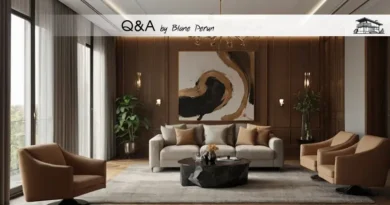How Do Interior Designers Use Geometry
Unveiling the Geometric Blueprint: The Art of Design in Interior Spaces
When pondering the question, “How do interior designers use geometry?” one might not immediately see the intricate dance of lines, shapes, and volumes that form the essence of every well-designed space. Yet, geometry serves as the silent language through which interior designers communicate balance, harmony, and aesthetic appeal. It’s not just about picking the right furniture or color palette; it’s about creating a cohesive environment where every angle and curve has its purpose, contributing to a larger symphony of design.

The Foundation of Form and Function
Spatial Planning and Proportion
At the core of interior design is the strategic use of space—a canvas painted with the strokes of geometric principles. Designers employ the golden ratio (1:1.618, denoted by the Greek letter Phi, φ), an age-old mathematical concept, to dictate the proportions of a room and its contents. This ratio, found in nature and classical architecture, guides the placement of objects, ensuring that the space is both functional and aesthetically pleasing.
The Harmony of Shapes
Shapes are the building blocks of design. A designer might use circular tables to promote social interaction in a living room or rectangular bookshelves to impart a sense of order and stability. The choice of shapes is influenced by psychological effects on humans, where circles are seen as soft and welcoming, while squares and rectangles suggest structure and reliability.
The Dynamics of Color and Pattern
Geometry in Textiles and Wallpapers
Geometry extends its reach into the textures and patterns that adorn the surfaces of a room. From the herringbone pattern of a hardwood floor to the intricate tessellations on a Moroccan tile, designers use geometric patterns to add depth and interest to flat surfaces. These patterns can either complement the room’s overall geometric scheme or introduce a contrasting element to break monotony.
Color Blocking and Geometric Accents
Color blocking, a technique that uses large, solid shapes of color to define different areas of a space, relies heavily on geometric principles. Interior designers might use a bold, square-colored accent on one wall to create a focal point or geometrically shaped mirrors to reflect light and add dynamism to a room.
The Interplay of Light and Shadow
Architectural Geometry
Windows, skylights, and doorways are not merely functional elements but geometric shapes that play a crucial role in the design narrative. Their sizes, shapes, and orientations determine the amount of natural light that enters a room, affecting both the ambiance and the perceived size of the space.
Lighting Fixtures as Geometric Sculptures
Lighting fixtures often double as pieces of geometric art, casting shadows and creating patterns that add to the room’s visual interest. A designer might choose a spherical pendant light to soften a room dominated by straight lines or angular fixtures to complement a modern, minimalist decor.
In the realm of interior design, geometry is not just a mathematical discipline but a fundamental tool that shapes our environments. It informs decisions from the macro scale of room layouts to the micro scale of decorative details. Understanding the nuanced ways in which interior designers use geometry reveals the meticulous planning and creative vision required to transform empty spaces into places of beauty and purpose.

Deciphering the Geometric Code: FAQs on Interior Design
How do interior designers use geometry to enhance small spaces?
Designers use geometric principles to create illusions of space and depth. For example, using diagonal lines in flooring can make a room appear larger, while circular mirrors can break the monotony of straight lines, adding a sense of spaciousness.
What role does the golden ratio play in interior design?
The golden ratio helps designers achieve balance and proportion in a space. By applying this ratio, designers can determine the ideal placement of furniture and artworks, ensuring that each element contributes to a harmonious and aesthetically pleasing environment.
Can geometric shapes influence the mood of a room?
Absolutely. Geometric shapes can significantly impact a room’s ambiance. Circular shapes tend to create a relaxed and welcoming atmosphere, while angular shapes, such as squares and triangles, introduce a sense of order and formality.
How do lighting fixtures contribute to the geometric design of a space?
Lighting fixtures serve as both functional and decorative elements that reinforce the room’s geometric theme. The shape of the fixture, along with the shadows and patterns it casts, can add to the room’s visual interest and thematic coherence.
In what ways do patterns and textures utilize geometry in interior design?
Patterns and textures rely on geometric shapes and lines to create visual appeal and depth. Whether it’s the repetitive geometry of a patterned rug or the structured lines of textured wall panels, these elements use geometry to add complexity and character to interior spaces.





